Do you have a question about the Quadra-Fire TREKKER Series and is the answer not in the manual?
Details HHT's warranty on defects in materials and workmanship at time of manufacture.
Defines the duration of warranty coverage for parts and labor for covered components.
Steps for setting up the appliance before initial operation, including emptying the firebox.
Instructions for the manual feed process during startup or after an empty hopper alarm.
How to adjust the desired temperature using the user interface by rotating the outer ring.
Details on safety certifications and standards the appliance meets, including FCC compliance.
Information on emissions certifications and compliance standards for particulate emissions.
Technical specifications for heat output (BTU) and energy efficiency ratings.
Essential safety measures including smoke/CO detectors and fire extinguishers.
Lists materials that will not ignite or burn, used for safe installation.
Lists materials that can ignite and burn, to be kept away from the appliance.
Guidance on selecting, storing, and using pellet fuel quality, ash content, and moisture.
Steps to take before operating the appliance for the first time, ensuring proper installation.
Instructions on how to safely fill the fuel hopper with pellets.
Description of the appliance's user interface and its Bluetooth key for operation.
Step-by-step guide for starting the appliance, including ignition sequence.
Explanation of the fire pot purge cycle's purpose and operation to maintain efficiency.
Steps for safely shutting down the appliance, ensuring components cool completely.
Factors affecting flame height and indicators of maintenance needs like lazy flame or soot.
Overview of how the appliance operates normally, including flame variance and heat output.
Procedures for restarting after fuel depletion or power failure, including manual feed.
Guidelines for maintaining safe clearances around the appliance to prevent fire hazards.
How to adjust the air/fuel ratio for optimal flame and performance based on conditions.
Steps for safely shutting down the appliance for maintenance, ensuring it is cool.
A summary chart of recommended cleaning and inspection frequencies for appliance parts.
Detailed instructions for cleaning various parts of the appliance, including fire pot and ash pan.
Steps for cleaning the fire pot using the lever mechanism and clean-out tool.
Instructions for emptying and cleaning the ash pan on a weekly or bi-weekly basis.
Safe procedures for disposing of ashes in a sealed container outdoors.
How to remove ash from the firebox using a vacuum cleaner to maintain performance.
Procedures for cleaning the heat exchanger and drop tube using a shop vacuum.
Inspecting the ash removal system components, like the ash dump lever and springs.
Steps to clean the hopper to prevent sawdust/fines build-up affecting fuel supply.
Instructions for safely cleaning the appliance's glass door using non-abrasive cleaners.
Inspecting the door latch and gasket for proper sealing and damage.
Procedures for cleaning the exhaust system, including the blower and housing.
How to clean the convection blower for optimal performance and quiet operation.
Instructions for cleaning the top vent adapter, including sweeping out ash build-up.
Explains soot formation and removal in the exhaust system due to combustion.
Information on identifying and responding to soot or creosote fires in the chimney.
Detailed steps for removing and reinstalling the firebox baffle for cleaning or inspection.
Step-by-step instructions for safely replacing the appliance's glass with ceramic glass.
Steps for replacing the combustion or exhaust blower, including motor and impeller.
Common issues and their corrective actions for the appliance not starting or stopping.
Troubleshooting common problems with the user interface display like ghosting or frozen screens.
Explanation of alarm codes from the user interface and their corresponding troubleshooting steps.
Descriptions of the main components like exhaust blower, control board, and feed system.
A log to record service dates, performed by, and description of service for the appliance.
Details HHT's warranty on defects in materials and workmanship at time of manufacture.
Defines the duration of warranty coverage for parts and labor for covered components.
Steps for setting up the appliance before initial operation, including emptying the firebox.
Instructions for the manual feed process during startup or after an empty hopper alarm.
How to adjust the desired temperature using the user interface by rotating the outer ring.
Details on safety certifications and standards the appliance meets, including FCC compliance.
Information on emissions certifications and compliance standards for particulate emissions.
Technical specifications for heat output (BTU) and energy efficiency ratings.
Essential safety measures including smoke/CO detectors and fire extinguishers.
Lists materials that will not ignite or burn, used for safe installation.
Lists materials that can ignite and burn, to be kept away from the appliance.
Guidance on selecting, storing, and using pellet fuel quality, ash content, and moisture.
Steps to take before operating the appliance for the first time, ensuring proper installation.
Instructions on how to safely fill the fuel hopper with pellets.
Description of the appliance's user interface and its Bluetooth key for operation.
Step-by-step guide for starting the appliance, including ignition sequence.
Explanation of the fire pot purge cycle's purpose and operation to maintain efficiency.
Steps for safely shutting down the appliance, ensuring components cool completely.
Factors affecting flame height and indicators of maintenance needs like lazy flame or soot.
Overview of how the appliance operates normally, including flame variance and heat output.
Procedures for restarting after fuel depletion or power failure, including manual feed.
Guidelines for maintaining safe clearances around the appliance to prevent fire hazards.
How to adjust the air/fuel ratio for optimal flame and performance based on conditions.
Steps for safely shutting down the appliance for maintenance, ensuring it is cool.
A summary chart of recommended cleaning and inspection frequencies for appliance parts.
Detailed instructions for cleaning various parts of the appliance, including fire pot and ash pan.
Steps for cleaning the fire pot using the lever mechanism and clean-out tool.
Instructions for emptying and cleaning the ash pan on a weekly or bi-weekly basis.
Safe procedures for disposing of ashes in a sealed container outdoors.
How to remove ash from the firebox using a vacuum cleaner to maintain performance.
Procedures for cleaning the heat exchanger and drop tube using a shop vacuum.
Inspecting the ash removal system components, like the ash dump lever and springs.
Steps to clean the hopper to prevent sawdust/fines build-up affecting fuel supply.
Instructions for safely cleaning the appliance's glass door using non-abrasive cleaners.
Inspecting the door latch and gasket for proper sealing and damage.
Procedures for cleaning the exhaust system, including the blower and housing.
How to clean the convection blower for optimal performance and quiet operation.
Instructions for cleaning the top vent adapter, including sweeping out ash build-up.
Explains soot formation and removal in the exhaust system due to combustion.
Information on identifying and responding to soot or creosote fires in the chimney.
Detailed steps for removing and reinstalling the firebox baffle for cleaning or inspection.
Step-by-step instructions for safely replacing the appliance's glass with ceramic glass.
Steps for replacing the combustion or exhaust blower, including motor and impeller.
Common issues and their corrective actions for the appliance not starting or stopping.
Troubleshooting common problems with the user interface display like ghosting or frozen screens.
Explanation of alarm codes from the user interface and their corresponding troubleshooting steps.
Descriptions of the main components like exhaust blower, control board, and feed system.
A log to record service dates, performed by, and description of service for the appliance.
| Brand | Quadra-Fire |
|---|---|
| Model | TREKKER Series |
| Category | Pellet stove |
| Language | English |
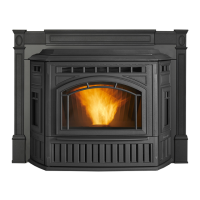

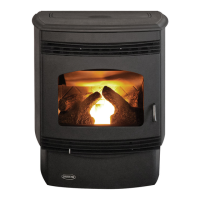
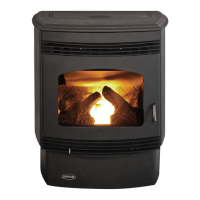
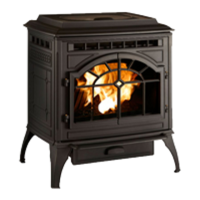
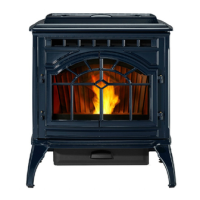
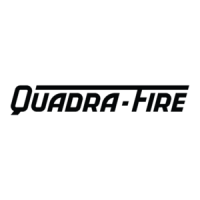

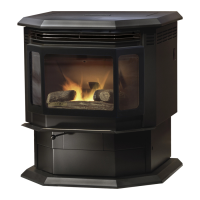

